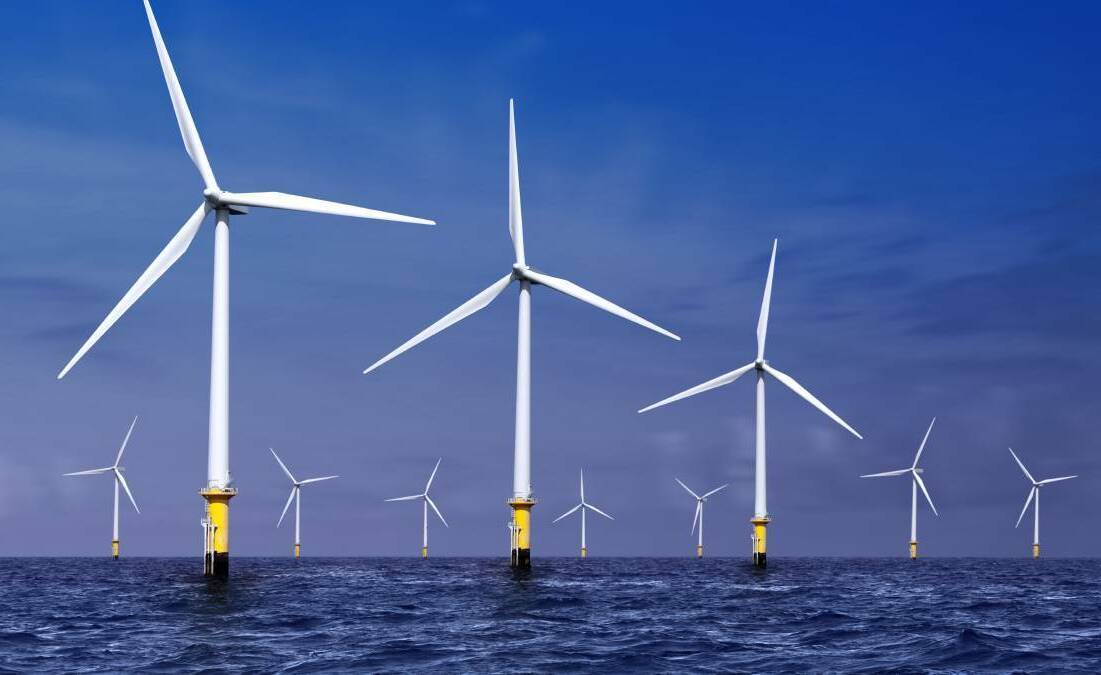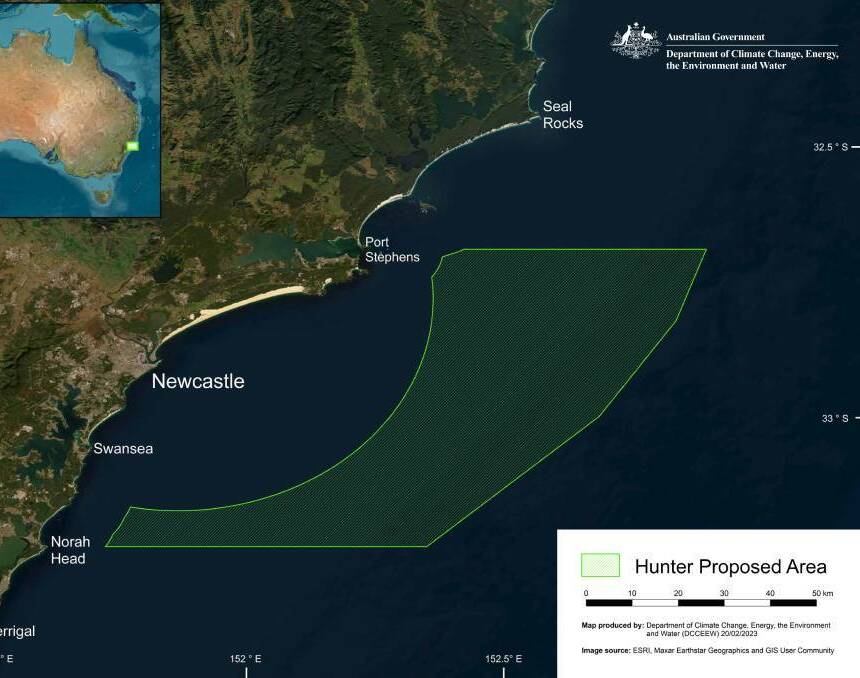
The Hunter Offshore Wind project should be doubled in size, one of the proponents vying for a piece of the clean energy action off the region's coast believes.
Oceanex chief executive Andy Evans said he welcomed a proposal by three of the country's largest unions to increase the size of the current zone by 30 per cent.
The Maritime Union of Australia, the Construction Forestry Mining and Energy Union and the Electrical Trades Union argue that this could be achieved by extending the existing boundary south to Terrigal and pushing it at least 15 kilometres offshore.
But Mr Evans said he was keen for it to expand even further.
"I certainly support a larger space but it will probably need to be double what the unions are saying so you can look at multiple projects in the new area," Mr Evans said.

One of the reasons for extending the zone is to maximise the area of shallow water (up to 300 metres) for fixed turbines.
Mr Evans said moving out into deeper water also should be encouraged because it would accelerate the growth of the floating foundation industry.
"Anything beyond 70 metres requires floating foundations anyway so I would support going further out," he said.
"Floating foundations could be a new industry for Australia and we should be trying to get as many new projects as possible up. We have an opportunity to be a world leader in this technology."
The Department of Climate Change, Energy, the Environment and Water consultation will continue community consultation for the current proposal - a 2810 square kilometre area extending from Norah Head to Port Stephens - until April 28.

If the government does agree to extend the zone, it may require an additional period of consultation.
Business Hunter chief executive Bob Hawes also said he supported extending the zone.
"The logic and principles behind the argument to expand it are sound and justified," he said.
"There will be some community concerns that need to be addressed. If that results in having to compromise some parts of the zone that were originally proposed we would still want to have an area that was big enough and coherent enough to achieve what we want rather than have to shrink it back."
The Hunter project, the second of six offshore wind projects proposed for Australia, could be operating by 2028.
The government estimates its proposal could create about 4800 jobs during the construction phase, with another 2400 ongoing maintenance jobs.
To see more stories and read today's paper download the Newcastle Herald news app here.







